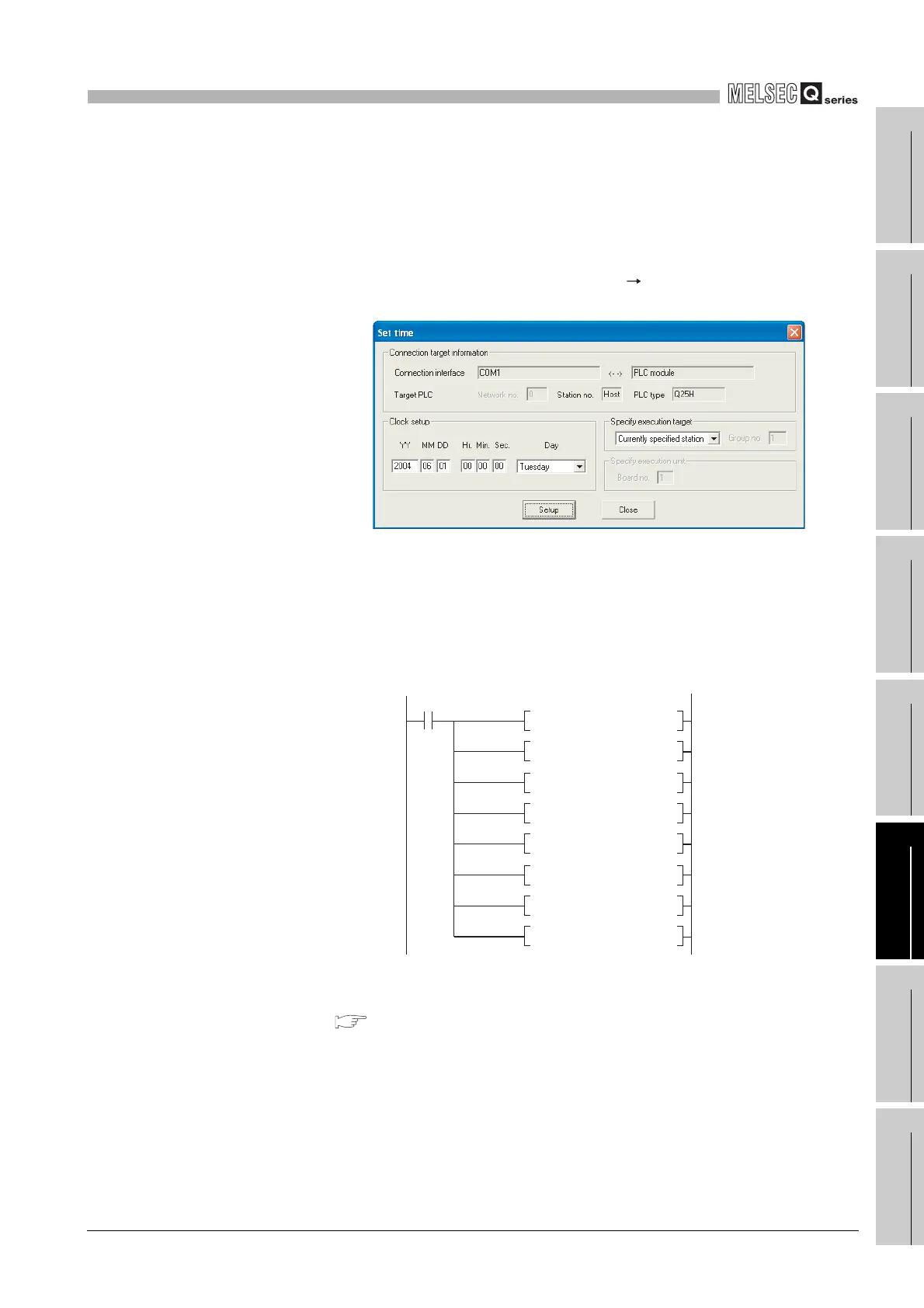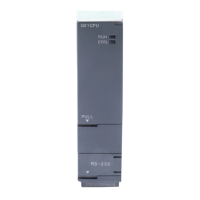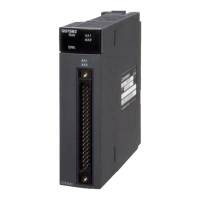6
FUNCTIONS
6.5 Clock Function
6
- 16
1
Overview
2
Performance
Specification
3
Sequence Program
Configuration and
Execution Conditions
4
I/O Nunber Assignment
5
Memories and Files
Handled by CPU Module
6
Functions
7
Communication with
Intelligent Function
Module
8
Parameters
(4) Changing and reading the clock data
(a) Changing the clock data
The clock data can be changed either by GX Developer or program.
1) Method to write from GX Developer
When using GX Developer, choose [Online] [Set time] to display the clock
setting window, and change the clock data.
2) Method to Write from the Program
When using a program, change the clock data with the clock data write
instruction (DATEWR).
Diagram 6.11 shows a program for writing the set clock data to D0 to D6 with
the clock data write instruction (DATEWR).
Refer to the following manual for details of the DATEWR instruction.
Q QCPU (Q Mode)/QnACPU Programming Manual (Common
Instructions)
Diagram 6.10 Clock data write from GX Developer
Diagram 6.11 Clock data write from sequence program
Write request
0
X0
Year 1999
Month 8
Day 10
Hour 11
Minute 35
Second 24
Day Tuesday: 2
MOVP
K1999
DO
MOVP
K8
D1
MOVP
D2
MOVP
D3
MOVP
D4
MOVP
D5
MOVP
D6
DATEWR
DO
K10
K11
K35
K24
K2

